Cabbage worms are common pests of leafy vegetables that can wreak havoc in your vegetable garden. These caterpillars are voracious feeders that can quickly devour your leafy vegetables if left unchecked.
In this blog post, we will explore the life cycle of cabbage worms, how to identify the different species and stages, and the damage they cause. Finally, how you can protect your vegetable plants from them.
What are cabbage worms?
Cabbage worms are the larval or caterpillar stages of either Pieris rapae or Pieris brassicae butterflies.
Pieris rapae adults are known as the small white butterfly, European cabbage butterfly, or small cabbage white, while their caterpillar stage is known as the imported cabbage worm.
Pieris brassicae adults are known as cabbage white butterfly, large white butterfly, while their caterpillar stage is known simply as cabbage worms.
Which vegetable plants do cabbage worms feed on?
Cabbage worms mainly target cabbage and other vegetable plants in the Brassica family, including broccoli, cauliflower, kale, and Brussels sprouts. They can also infest and damage other leafy greens, such as lettuce, spinach: swiss chard, collard greens, and mustard greens, while they can also infest other vegetable and ornamental plants that are nearby.
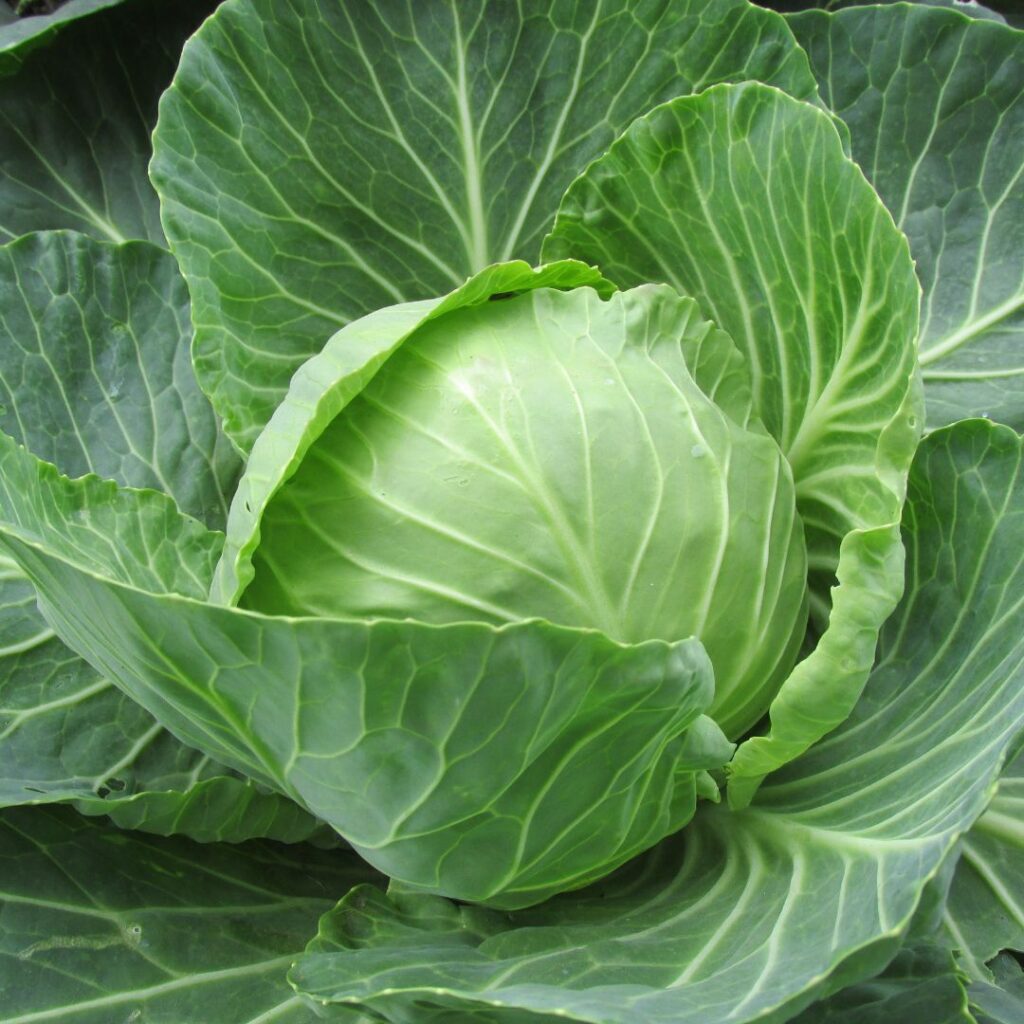


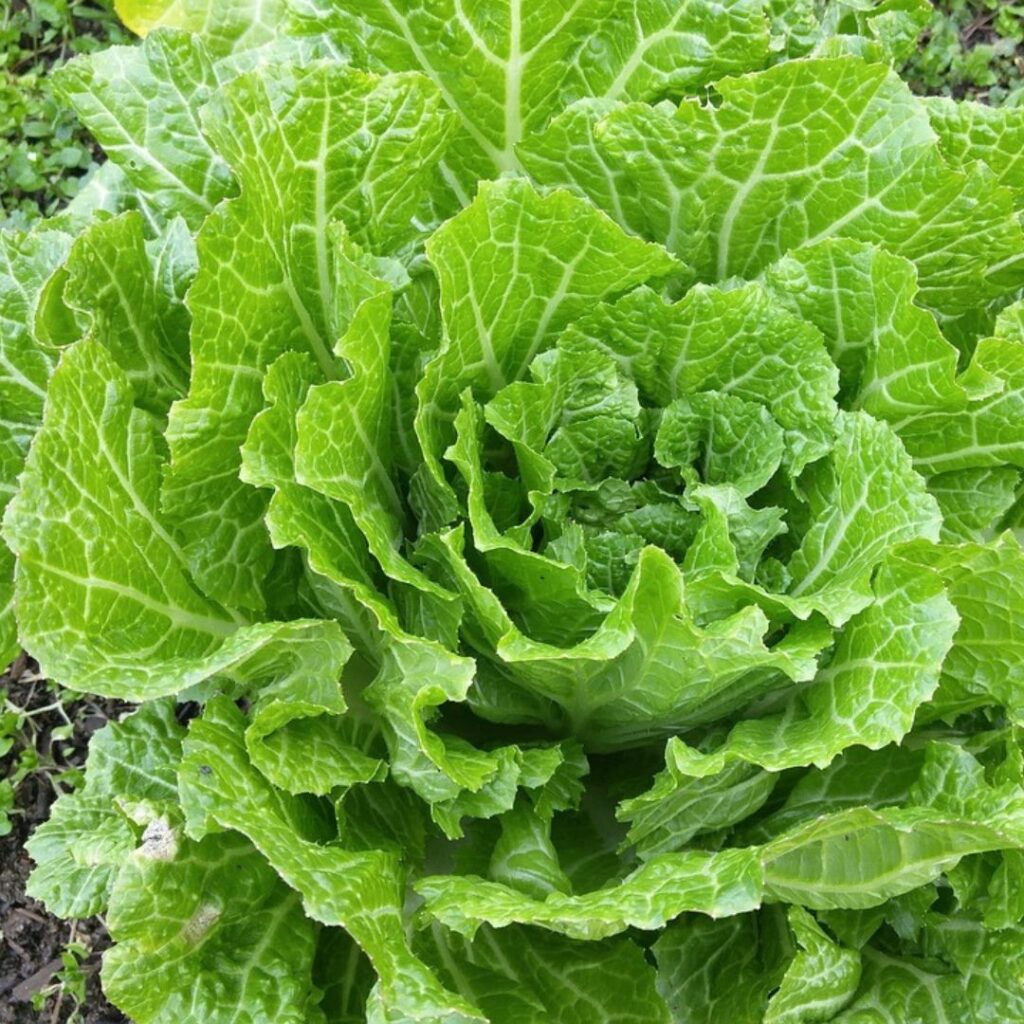
Signs of a cabbage worm infestation
- Chewed or damaged leaves: Cabbage worms feed on the leaves of plants, leaving behind chewed and ragged leaves. Check the foliage of your plants for signs of feeding damage, especially on the outer leaves.
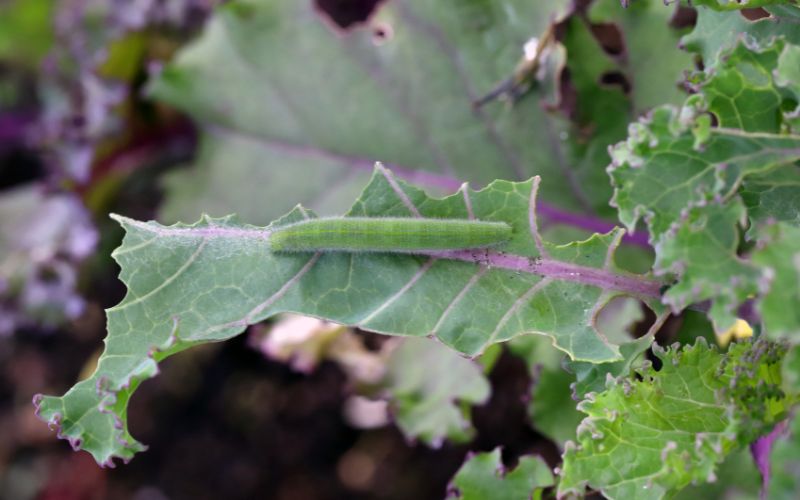
- Skeletonized leaves: Cabbage worms have a tendency to consume the leaf tissue between the veins, leaving behind skeletonized leaves. The veins of the leaves may remain intact while the rest of the leaf becomes transparent or paper-like.
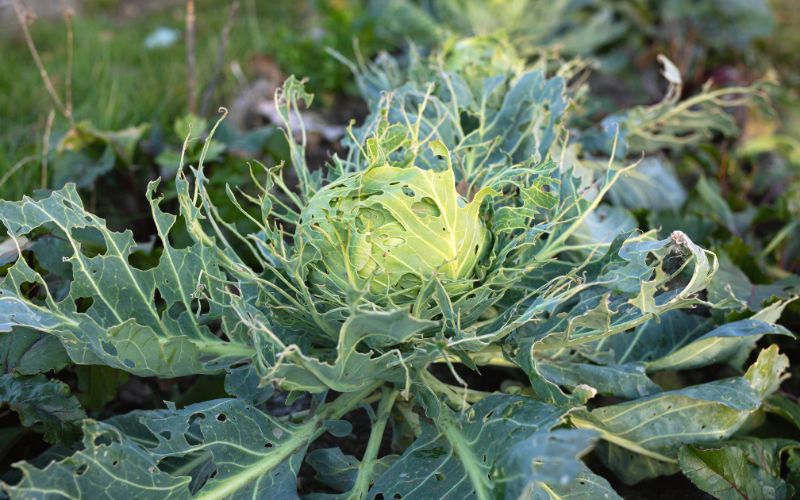
- Frass or droppings: Cabbage worms like all caterpillars leave behind small greenish or black droppings, known as frass, on the leaves or around the base of the plants. These droppings can be an indication of their presence. See image of newly hatched cabbage worms for what frass looks like
- Presence of caterpillars: Cabbage worms can be somewhat difficult to spot. Look closely for them on the undersides. See below for what they look like
- White butterfly activity: Cabbage worms are the larvae of white butterflies, so an increase in white butterfly activity around your plants may indicate the presence of cabbage worms. See below for what these butterflies they look like
- Stunted growth or reduced yield: Severe cabbage worm infestations can lead to stunted growth, reduced vigor, and overall poor plant health. If you notice a significant decline in the growth or yield of your cabbage or other susceptible plants, cabbage worms could be the culprit.
The life cycle of cabbage worms
Like all butterflies, adults of both species of cabbage worm lay eggs, from which tiny caterpillars emerge and go through several stages as they mature during the next few weeks while feeding on their host plant. Next, they pupate and the adult butterflies emerge from pupae, completing their life cycle.
How to identify each stage in the life cycle of cabbage worms
Both species of cabbage worm lay yellow, capsule-shaped eggs with ridges from top to bottom. The eggs are laid on the underside of cabbage or other host plants. As expected the eggs of the large white butterfly are slightly larger at 1 mm in length than the eggs of the small white butterfly, which are 0.6-0.8 mm in length. Large while butterfly eggs are laid in clusters and very close to each other, and are fixed to the leaf using a stem-like structure, called a pedicel. Small white butterfly eggs are laid in smaller clusters with some space between the eggs, and don’t have a pedicel.
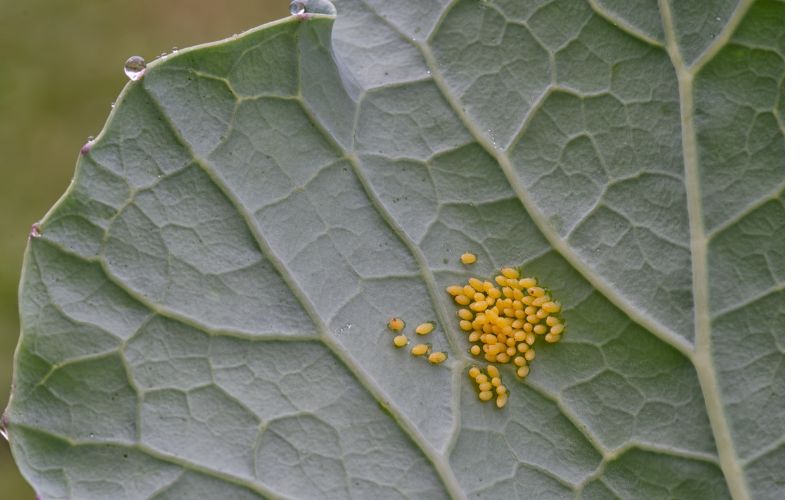
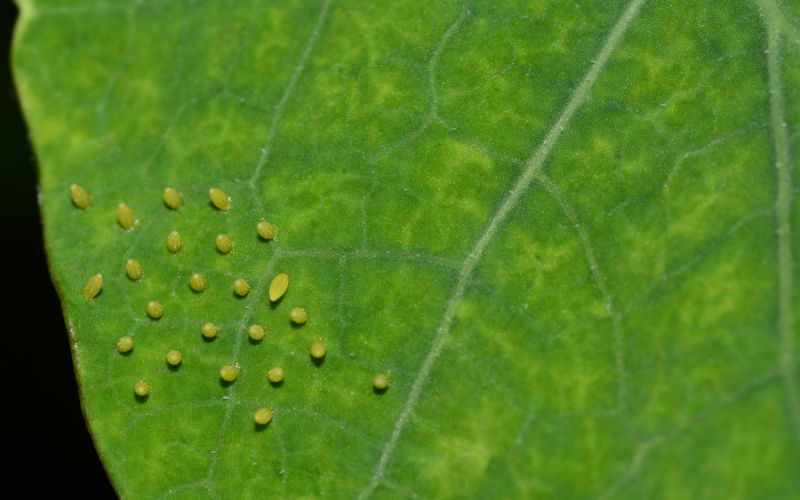
The newly hatched caterpillars of both species of cabbage worm are almost identical. They have light green translucent bodies with black or dark brown heads and are 1-3 mm long.
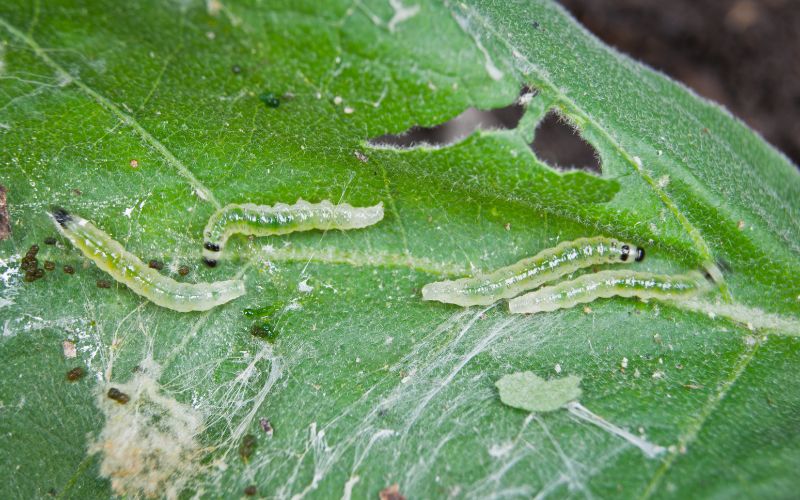
The caterpillars keep feeding while they mature. As they mature and go through different larval stages as they molt over the next few weeks, the appearance of each species becomes more distinct.
Mature imported cabbage worms, Pieris rapae, are easily recognizable by their bright green color and velvety texture. They have smooth bodies with a series of light-yellow colored lines running along their sides.
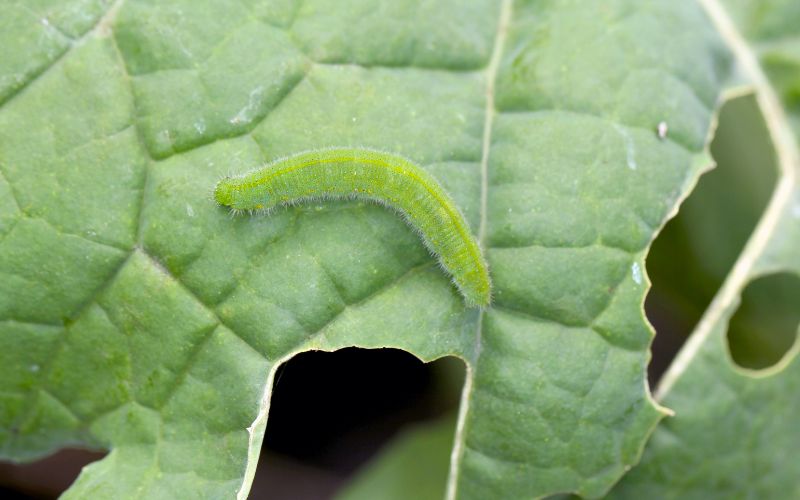
Mature cabbage worms, Pieris brassicae, have a pale green body with narrow yellowish-green lengthwise stripes running along their sides and a prominent, yellowish-green stripe on top. They also have black spots usually arranged in pairs along the stripe on top and a black or dark brown head.
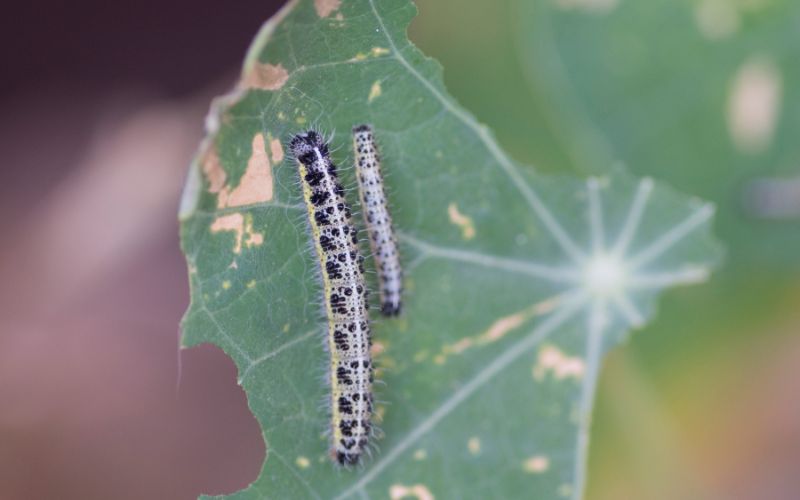
After reaching maturity the caterpillars pupate. Initially, the pupae have a pale green or pale yellow color. As they mature, the pupae develop a more brownish or grayish color. The pupae are usually attached to a substrate, such as the undersides of leaves, stems, or other objects.
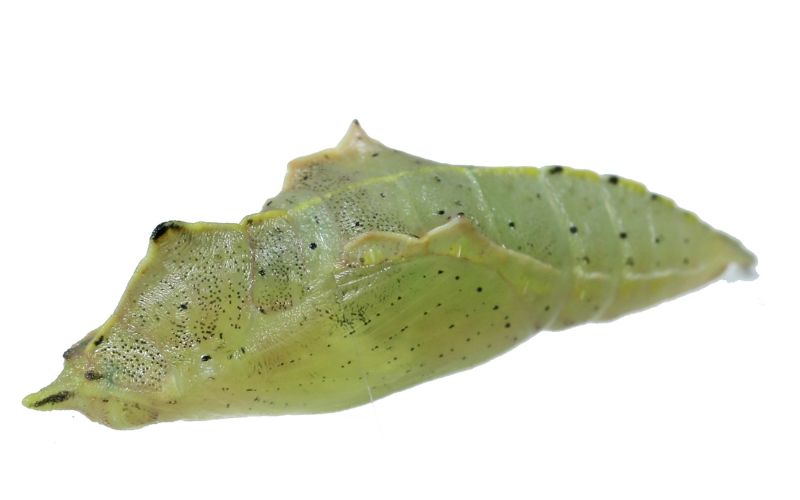
After 10-14 days, the adult butterflies emerge from the pupae.
The small white butterfly, Pieris rapae, has predominantly white color wings, with black or grayish-black markings on the tips and along the edges. Males usually have a single black spot on each forewing, while females have two black spots. When in flight, the small white butterfly displays a light and fluttery movement.
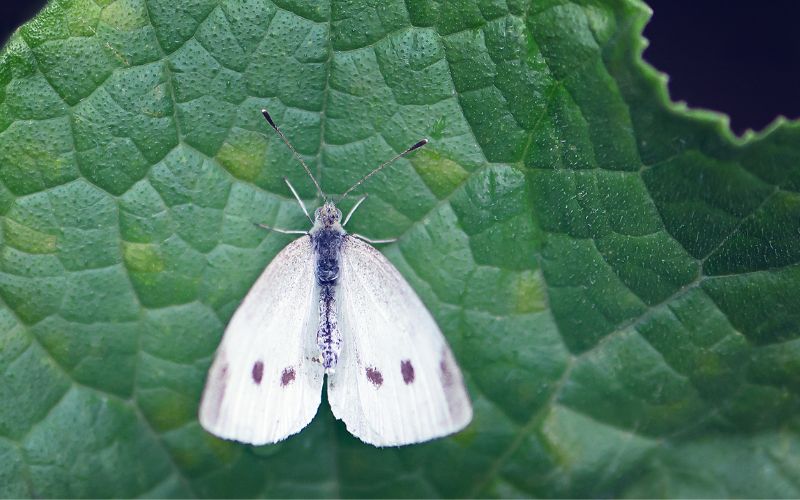
The large white butterfly, Pieris brassicae, is as its name suggests larger and also has primarily white wings, but they have broader and more extensive black markings compared to the small white butterfly. The black markings cover a significant portion of the wings, with a distinctive black band on the forewings. The underside of the wings is usually pale yellow with grayish markings that are more pronounced than those of Pieris rapae. The large white butterfly has a slower and more leisurely flight compared to the small white butterfly.
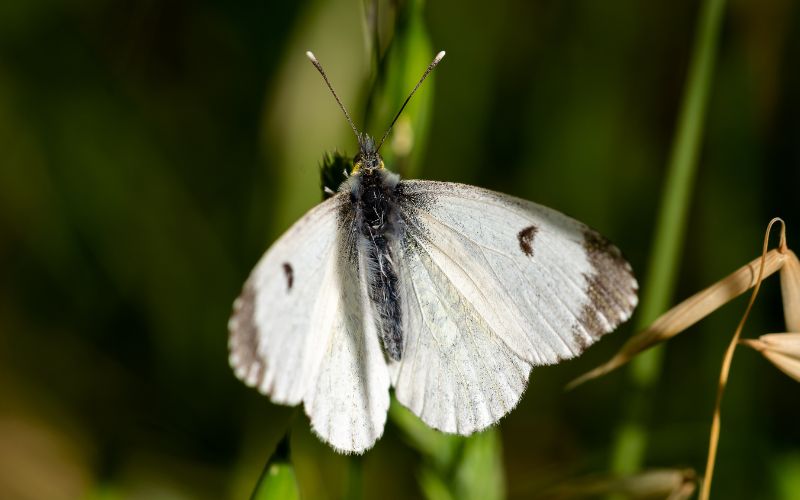
How to Prevent and Control Cabbage Worms
- Handpicking: Regularly inspect your cabbage and other leafy vegetable plants and manually remove any visible cabbage worms by hand before it turns into an infestation. Wearing gloves, gently pick them off and drop them into a bucket of soapy water to ensure they cannot return to the plants.
- Row covers: Use lightweight floating row covers to physically block adult butterflies from laying eggs on your cabbage and other leafy vegetable plants. Secure the covers tightly around the plants, ensuring no gaps for the butterflies to enter.
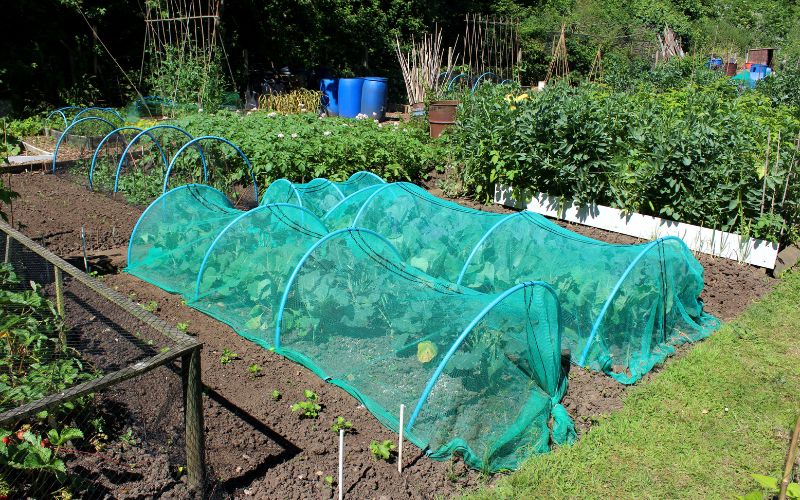
- Biological control: Encourage natural predators such as birds, ladybugs, and spiders that feed on cabbage worms.
A parasitic braconid wasp, Cotesia glomerata, primarily targets the larvae of Pieris rapae, the small white butterfly but may also parasitise the larvae of Pieris brassicae, the large white butterfly and other related species. The female Cotesia glomerata wasp lays eggs inside the body of the caterpillars, and the developing wasp larvae feed on the tissues of the host caterpillar, eventually killing it. Finally, the wasp larvae create bright yellow cocoons while still feeding on the caterpillar.
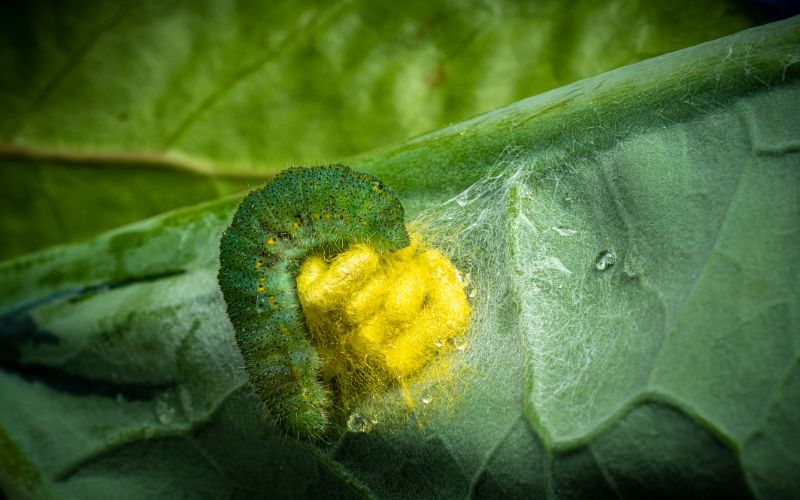
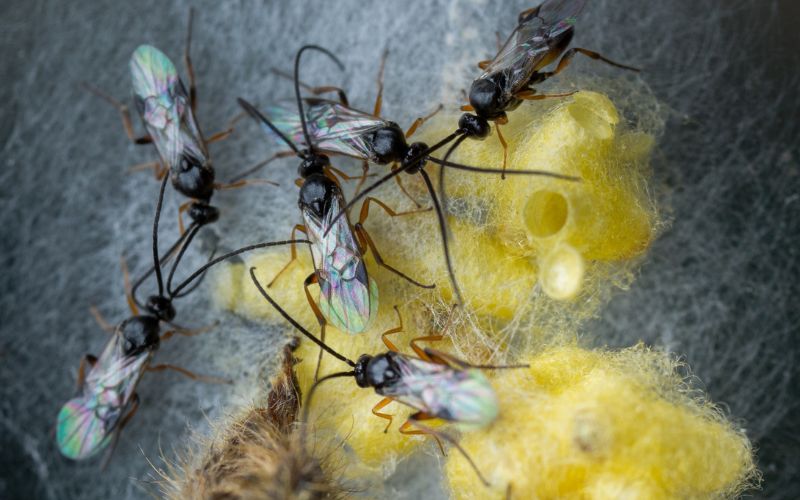
You can build birdhouses and bird baths, and plant flowers that attract beneficial insects, to increase their presence in your garden.
- Organic Insecticides: If the infestation is severe or other methods are not sufficient to control it, you can opt for organic insecticides. Bacillus thuringiensis (Bt) is a bacterial spray that specifically targets caterpillars, including cabbage worms, without harming beneficial insects or humans.
- Companion Planting: Intercropping cabbage with aromatic herbs such as thyme, mint, or rosemary can help deter cabbage worms. These strong-smelling plants confuse and repel cabbage worms, reducing the likelihood of infestation.
Cabbage worms can be a frustrating and devastating pest in vegetable gardens. Knowing how to identify cabbage worms at each life stage can help you get rid of them before they cause an infestation. Regular monitoring, handpicking, row covers, biological controls, companion planting, and targeted organic insecticides can be used to prevent and control cabbage worm infestations.


